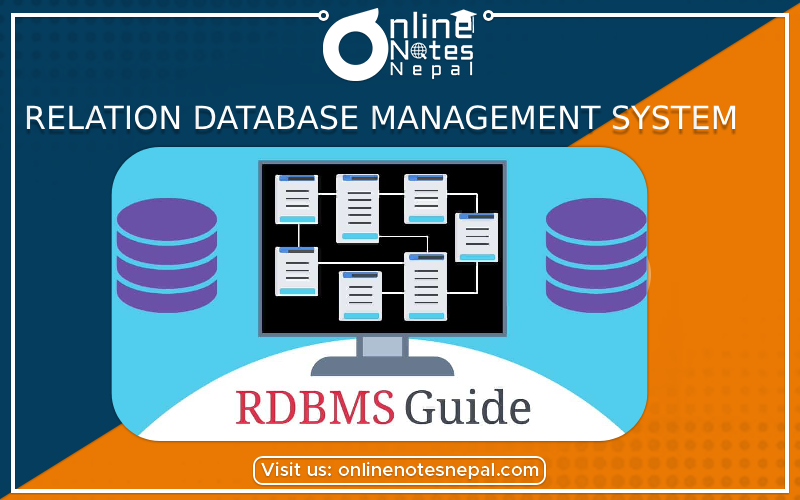Published by: Anu Poudeli
Published date: 01 Aug 2023

A Relational Database Management System (RDBMS) is a type of database management system that stores and maintains data in a structured manner using relational model principles. Dr. E.F. Codd established the relational model in the 1970s, and it has since become the dominant strategy for organizing and managing data in a variety of applications.
Here are some key RDBMS ideas and characteristics:
1.Tables: Data in an RDBMS is structured into tables, which are made up of rows and columns. Each table represents either a single entity or a relationship between entities. A table called "Customers" might store information about individual customers, but a table called "Orders" might store information about customer orders.
2.Rows : Table rows indicate a single record or instance of the entity being modeled. A row in the "Customers" table, for example, would represent an individual customer with attributes such as name, address, and contact information.
3.Columns: Columns, often known as fields, are used to hold the attributes or properties of the entity being stored. Columns in the "Customers" database might contain "Customer ID," "Name," "Address," "Email," and so on.
4.Primary Key: A primary key is a unique identifier for each row in a table that is normally included in an RDBMS. It ensures that each record is individually identified and aids in the establishment of links between tables.
5. Foreign Key : A foreign key is a column or combination of columns in one table that relates to the primary key of another table. It allows for the creation of associations between multiple tables, resulting in a powerful system for data retrieval and data integrity.
6. Normalizaion : Normalization is the process of designing a database schema in such a way that it minimizes data redundancy and increases data integrity. It entails breaking down huge tables into smaller ones and connecting them efficiently utilizing relationships.
7.SQL (Structured Query Language): SQL is the industry standard for interacting with RDBMS. It enables users to execute tasks such as data querying, insertion, updating, and deletion. SQL provides a sophisticated and standardized method of manipulating data.
8.Data integrity : RDBMS ensures data integrity through a variety of processes such as primary key constraints, foreign key constraints, and data validation rules. These processes aid in the preservation of data accuracy and consistency.
9.ACID qualities: To assure data reliability and transaction management, RDBMS systems are meant to adhere to the ACID (Atomicity, Consistency, Isolation, and Durability) qualities.
10.Scalability and performance: RDBMS systems are built to manage massive amounts of data while also supporting concurrent user access. Indexing, query optimization, and caching are just a few of the approaches used to boost efficiency.
11.RDBMS Examples: Popular RDBMS examples include MySQL, PostgreSQL, Oracle Database, Microsoft SQL Server, and SQLite.
Because of its flexibility, data consistency, and ease of management, RDBMS is widely utilized in a wide range of applications, from basic desktop applications to complex enterprise-level systems. However, before selecting a database management system, it is critical to analyze the unique requirements of your project, as alternative types, such as NoSQL databases, may be more appropriate in certain circumstances.